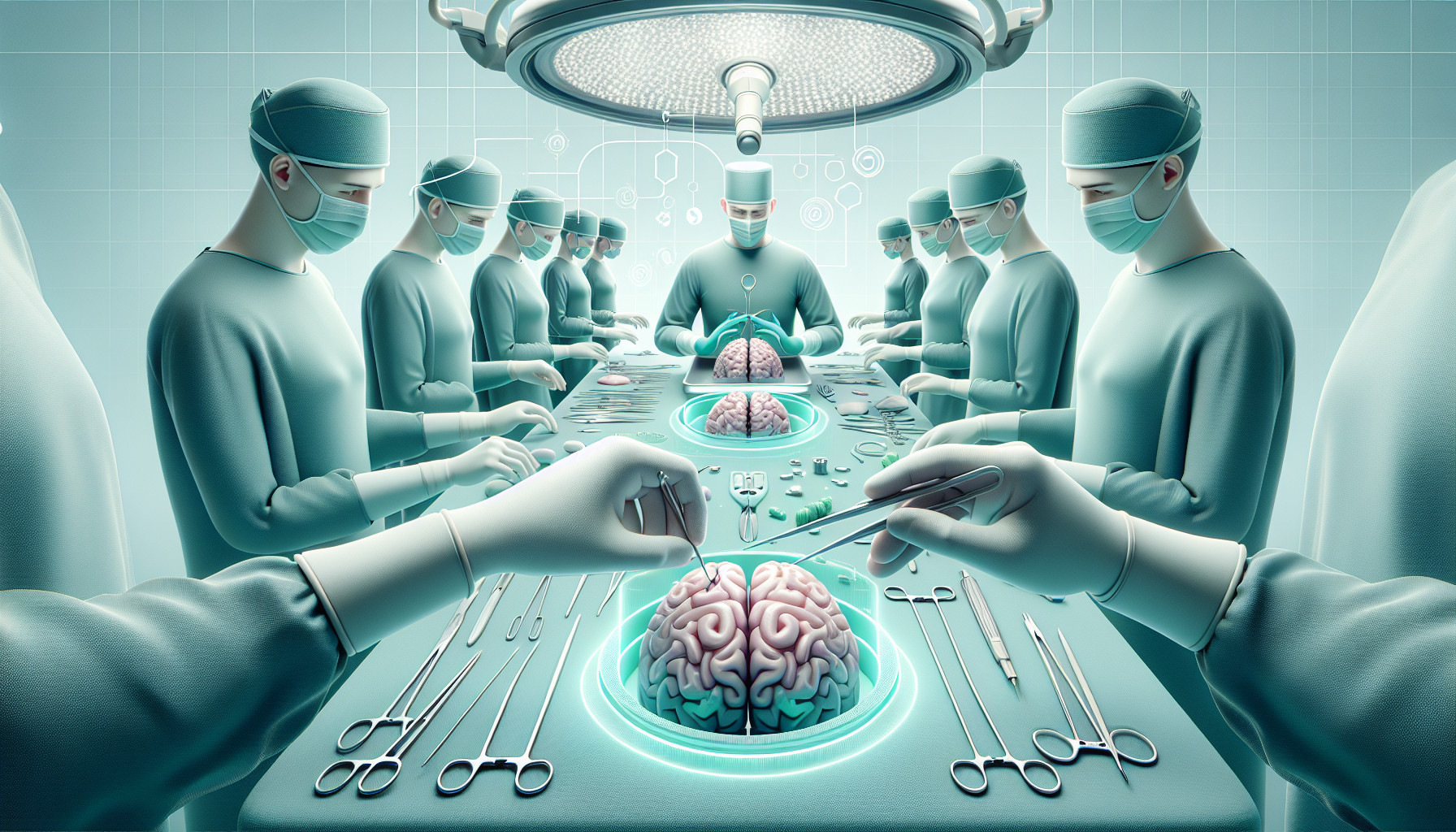Our Summary
This research paper reports on the use of robotic assistance in deep brain stimulation (DBS) surgeries, a relatively unexplored area. The researchers compared the outcomes of 20 DBS surgeries performed with a robot to 20 traditional surgeries.
The results showed that the robot-assisted surgeries were faster and more efficient. Also, the accuracy of the robot was high, with only minor deviations from the target. Furthermore, the robot required fewer attempts to accurately place the brain stimulation device compared to the traditional method.
This study was the first to use a specific robotic system, the Mazor Renaissance platform, for DBS surgery. The findings suggest that using this robot can improve the efficiency, accuracy, and safety of these surgeries.
FAQs
- What is the main focus of this research paper about robotic assistance in brain surgery?
- How do the outcomes of robotic-assisted deep brain stimulation (DBS) surgeries compare to traditional surgeries?
- What specific robotic system was used in the study and what were the reported benefits?
Doctor’s Tip
One helpful tip a doctor might tell a patient about brain surgery is to follow all pre-operative instructions carefully, such as fasting before the surgery and avoiding certain medications. It is also important to discuss any concerns or questions with your healthcare team before the procedure. After surgery, it is crucial to follow post-operative care instructions, attend follow-up appointments, and report any unusual symptoms to your doctor immediately. Additionally, it is important to give yourself time to rest and recover properly after brain surgery.
Suitable For
Patients who may be recommended for brain surgery include those with:
Brain tumors: Surgery may be recommended to remove tumors that are causing symptoms or affecting brain function.
Epilepsy: Surgery may be considered for patients with seizures that are not controlled with medication.
Parkinson’s disease: Deep brain stimulation surgery may be recommended for patients with Parkinson’s disease who are not responding well to medication.
Aneurysms: Surgery may be necessary to repair aneurysms that are at risk of rupturing.
Traumatic brain injuries: In some cases, surgery may be required to treat severe head injuries.
Hydrocephalus: Surgery may be recommended to implant a shunt to drain excess cerebrospinal fluid in patients with hydrocephalus.
Stroke: Surgery may be necessary to remove blood clots or repair damaged blood vessels in patients who have had a stroke.
It is important for patients to discuss their specific condition and treatment options with their healthcare provider to determine if brain surgery is the best course of action for them.
Timeline
Before the surgery:
- Patient undergoes consultations with neurosurgeon and other medical professionals to determine if surgery is necessary.
- Patient undergoes preoperative testing and imaging to assess brain function and identify the target area for surgery.
- Patient receives instructions on preoperative preparations, such as fasting and medication adjustments.
During the surgery:
- Patient is placed under general anesthesia.
- Neurosurgeon makes an incision in the scalp and drills a small hole in the skull to access the brain.
- Neurosurgeon uses imaging techniques to guide the placement of the DBS electrode in the target area.
- Electrodes are implanted and connected to a pulse generator, which is placed under the skin in the chest area.
After the surgery:
- Patient is monitored in the recovery room and may stay in the hospital for a few days for observation.
- Patient may experience temporary side effects such as headache, nausea, or confusion.
- Patient undergoes programming sessions to adjust the settings of the pulse generator for optimal symptom control.
- Patient undergoes follow-up appointments with the neurosurgeon and other medical professionals to monitor progress and make any necessary adjustments.
Overall, the timeline for a patient before and after brain surgery involves thorough evaluation, careful planning, and ongoing support to ensure the best possible outcome.
What to Ask Your Doctor
- What specific benefits does robotic assistance offer in deep brain stimulation surgery compared to traditional methods?
- How does the accuracy of the robot compare to traditional methods in placing the brain stimulation device?
- What are the potential risks or complications associated with robotic-assisted deep brain stimulation surgery?
- How does the use of the Mazor Renaissance platform specifically impact the outcomes of the surgery?
- What is the success rate of deep brain stimulation surgeries performed with robotic assistance?
- How does the recovery process differ for patients who undergo robotic-assisted deep brain stimulation surgery versus traditional surgery?
- Are there any limitations or contraindications to using robotic assistance in deep brain stimulation surgery?
- How does the cost of robotic-assisted deep brain stimulation surgery compare to traditional surgery?
- What training and experience does the surgical team have with using robotic assistance in deep brain stimulation surgery?
- Are there any ongoing research or advancements in the field of robotic-assisted deep brain stimulation surgery that I should be aware of?
Reference
Authors: Ho AL, Pendharkar AV, Brewster R, Martinez DL, Jaffe RA, Xu LW, Miller KJ, Halpern CH. Journal: Oper Neurosurg. 2019 Oct 1;17(4):424-431. doi: 10.1093/ons/opy395. PMID: 30629245
